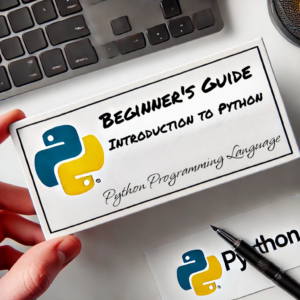Python is one of the most popular programming languages today. It is widely used for web development, data science, automation, and artificial intelligence. But what makes Python so special? In this guide, we will explore why Python is beginner-friendly, how to get started, and its key features.
Why Choose Python?
Python is easy to learn. It has a simple syntax that is similar to the English language. Moreover, Python is highly versatile. You can use it for different applications, from building websites to analyzing data. Furthermore, it has a vast community, which means there are many tutorials, forums, and resources available.
Key Benefits of Python:
- Easy to Read – Python uses indentation instead of complex symbols.
- Beginner-Friendly – You can write and understand Python code quickly.
- Versatile – It is used in many industries, including web development, finance, and healthcare.
- Huge Library Support – Python has libraries for everything, including machine learning, automation, and gaming.
- Community Support – There are millions of Python developers worldwide.
Because of these advantages, Python is an excellent choice for beginners. Now, let’s learn how to install Python and write your first program.
How to Install Python?
Installing Python is simple. First, visit the official Python website. Then, download the latest version for your operating system. After that, follow the installation steps. Once installed, you can check if Python is working. Open your terminal or command prompt and type:
python --version
If Python is installed correctly, it will display the version number. Now, you are ready to write your first Python program!
Your First Python Program
Python programs are easy to write. Let’s start with a simple example:
print("Hello, World!")
This program prints Hello, World! on the screen. In Python, the print() function displays text output. Unlike other languages, Python does not require semicolons or extra syntax.
Understanding the Code:
print()is a built-in function that prints messages."Hello, World!"is the text we want to display.- No semicolons, curly braces, or extra syntax are needed.
That’s it! You have just written your first Python program.

Python Basics Every Beginner Should Know
1. Variables and Data Types
Variables store data. Python does not require you to define data types explicitly.
name = "Alice" # String age = 25 # Integer height = 5.7 # Float is_student = True # Boolean
To read more about data types click here
2. Conditional Statements
Python allows you to make decisions using if-else statements.
age = 18
if age >= 18:
print("You are an adult.")
else:
print("You are a minor.")
3. Loops
Loops help execute code multiple times.
For Loop:
for i in range(5):
print("Iteration:", i)
While Loop:
x = 1
while x <= 5:
print("Number:", x)
x += 1
4. Functions
Functions help you write reusable code.
def greet(name):
print("Hello,", name)
greet("Alice")
Functions allow better code organization and reusability.
Final Thoughts
Python is a beginner-friendly programming language. It is easy to learn, highly versatile, and widely used across industries. Because of its simplicity, even absolute beginners can start coding within minutes. If you want to explore programming, Python is the best language to begin with. So why wait? Start learning Python today and build amazing projects!